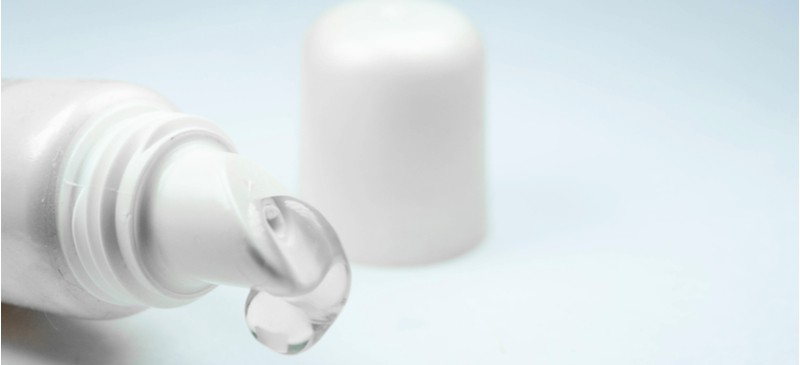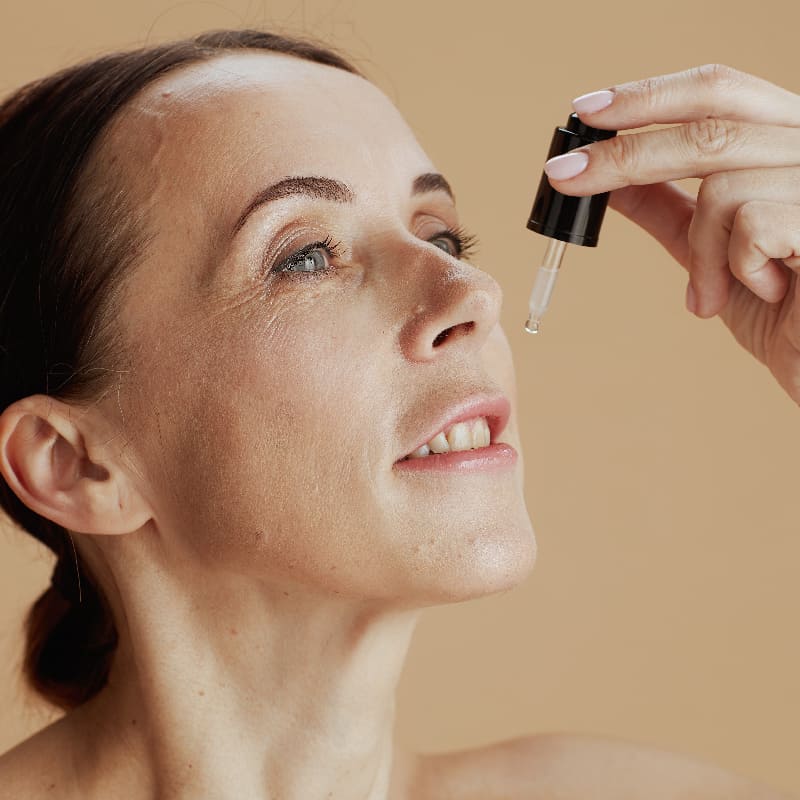This Dr. Axe content is medically reviewed or fact checked to ensure factually accurate information.
With strict editorial sourcing guidelines, we only link to academic research institutions, reputable media sites and, when research is available, medically peer-reviewed studies. Note that the numbers in parentheses (1, 2, etc.) are clickable links to these studies.
The information in our articles is NOT intended to replace a one-on-one relationship with a qualified health care professional and is not intended as medical advice.
This article is based on scientific evidence, written by experts and fact checked by our trained editorial staff. Note that the numbers in parentheses (1, 2, etc.) are clickable links to medically peer-reviewed studies.
Our team includes licensed nutritionists and dietitians, certified health education specialists, as well as certified strength and conditioning specialists, personal trainers and corrective exercise specialists. Our team aims to be not only thorough with its research, but also objective and unbiased.
The information in our articles is NOT intended to replace a one-on-one relationship with a qualified health care professional and is not intended as medical advice.
Azelaic Acid Benefits and Uses for Skin (Plus Side Effects)
August 3, 2020

Among the many “natural” skin care ingredients that are available, few can help address such a wide range of skin imperfections as well as azelaic acid (AA) can.
If you’ve heard of salicylic acid (SA) before, and perhaps tried it to help clear up acne or uneven skin tone, then you’re already aware of how some acids work to improve the appearance and health of your skin.
SA and azelaic acid have certain things in common, including that they can both help prevent breakouts, however azelaic acid seems to be even more powerful for reducing hyperpigmentation, rosacea and other issues tied to inflammation of the skin.
What Is Azelaic Acid?
Azelaic acid is a naturally occurring acid called a dicarboxylic acid. It is applied to the skin for its ability to help improve tone and texture — and particularly to treat acne and rosacea.
This acid is found in grains like barley, wheat and rye — plus it can also be created in a lab from yeast. Lab-engineered AA is the type most often found in skin care products.
What does azelaic acid do to your skin? Research shows that it has antimicrobial, anti-inflammatory, free-radical-scavenging and exfoliating effects, meaning it’s capable of reducing breakouts, signs of sun damage, redness, swelling and more.
It seems to work by decreasing the presence of bacteria that can lead to acne and inflammation, and by inhibiting the release of cytokines on the top layers of the skin that contribute to issues like bumps, redness and uneven skin tone. It can also decrease production of keratin, which can help limit breakouts.
Related: Alpha Arbutin Benefits for Skin + How to Use It
Health Benefits
Here are some of the many ways that azelaic acid benefits skin health:
1. Can Help Reduce Acne
Products containing AA can help diminish skin blemishes in several ways, including by killing bacteria (such as Proprionibacterium acnes and Staphylococcus epidermidis) that clog pores and by decreasing inflammation. Its anti-inflammatory effects make it a good option for people dealing with deep, cystic acne or lots of red bumps, since it may help make blemishes less visible, red and painful.
Some people also use azelaic acid to help prevent and fade acne marks and scars. There’s evidence suggesting it can help improve cell turnover and heal skin more quickly, promoting more even tone once blemishes are healed.
2. Helps Improve Tone and Reduce Redness
AA can be used to naturally help treat hyperpigmentation (including the inflammatory type), rosacea and uneven skin tone. It’s considered to be a natural keratolytic and comedolytic, meaning it helps regulate normal growth of skin cells.
It’s also a free-radical scavenger, which makes it capable of reducing inflammation.
As a natural treatment for rosacea, it works by helping decrease underlying causes of this condition, such as inflammation and visible blood vessels that lead to redness. One systematic review published in JAMA Dermatology found that two prescription-strength rosacea treatments containing azelaic acid were effective in four out of five studies at reducing rosacea symptoms, including count and severity of lesions (papules and pustules).
It’s also used for skin lightening, reduction of scars and reversing other types of discoloration. It can help gently exfoliate the skin, leading to a more even skin tone, and research shows it’s capable of helping prevent development of scars and dark spots by decreasing melanin synthesis.
Does azelaic acid lighten skin? When it comes to hyperpigmentation, including melasma, azelaic acid can tackle this tissue by blocking melanocytes from making more melanin, which affects the skin’s pigment.
Additionally, some find that it helps reduce overall skin sensitivity (when used in appropriate amounts and with sunscreen), thereby decreasing signs of irritation.
3. Has Exfoliating Effects
Like other acids that are applied topically, this acid has exfoliating effects that help improve cell turnover and smooth the skin. Using AA can help decrease bumps and the appearance of large pores, while boosting evenness and smoothness of the skin’s surface.
4. Can Help Reduce Signs of Aging and Fade Dark Spots
Because azelaic acid can help scavenge reactive oxygen species, it can help fade visible skin imperfections. By reducing inflammation, decreasing brown patches and dark spots, and evening your skin tone, it can make your skin appear more youthful and overall healthier.
Related: Mandelic Acid Benefits for Skin Cell Turnover and Acne Reduction
How to Use It
AA is available in both prescription and over-the-counter forms. In the U.S., it first became approved by the Food and Drug Administration as a prescription in 2003.
Azelaic acid can be applied to the skin in gel, foam and cream forms. While over-the-counter products tend to be much less expensive than prescriptions, they are also less concentrated and may take longer to work.
Two of the most popular prescription azelaic acid products are Azelex and Finacea, which are mostly used to treat rosacea. Prescription products have AA concentrations between 15 percent and 20 percent.
Some over-the-counter products are available in weaker strengths, such as concentrations of 10 percent or less, however these may be harder to find. These are a good option if you’re looking to treat moderate or mild acne and if price is a factor.
To use azelaic acid on your skin, follow these steps:
- Wash your skin with warm water and a gentle cleanser, then pat dry. Avoid using astringents or strong soaps or exfoliants before applying it, which can increase irritation.
- Apply a small amount of medication to the clean, affected area, then let your skin dry.
- Don’t remove the product from your skin. Once it’s absorbed and dried, you can apply other products, lotion or makeup.
- Depending on the specific product you’re using, you may need to repeat this routine twice per day (but start with one application daily, or even every other day). Follow your dermatologist’s directions, or start out with one application per day if you’re unsure before increasing to twice daily applications.
- If using it twice daily, apply it in the morning and the evening at around the same times every day.
How long does it take for azelaic acid to work?
Products containing AA can take a while to work, usually at least several weeks (four to six) and sometimes several months (up to three months for some people). For this reason, some people use other products at the same time to speed up results.
Can you use azelaic acid every day?
AA can be applied to affected skin once or twice daily. You’ll want to apply it after cleansing your skin. However, when just beginning to use it, especially if you have sensitive skin, try only using it every other day to test your reaction.
You can use it alone every day on clean skin or mix it with your other favorite products, such as serums or moisturizers.
For the best results, use products with AA along with broad-spectrum sunscreen (SPF 30 or higher). Apply sunscreen after AA has dried on your skin.
Risks and Side Effects
Like other strong skin care products, azelaic acid is capable of causing cause side effects, especially among people with sensitive skin or those who use prescription, high-concentration products frequently.
Potential side effects can include:
- skin burning
- dryness
- peeling
- redness and irritation
- rash
You can help limit side effects by wearing sunscreen on top of AA products when you go outside, since it may make your skin more sensitive to UV light.
You should also start by using less and gradually working your way up to twice daily applications if you’d like.
It’s considered safe for pregnant women to use AA in most situations, however it’s always smart to speak with your doctor before beginning to use any new treatments while pregnant.
Azelaic Acid vs. Other Acne Treatments
Azelaic acid is considered to be relatively mild and gentle, especially compared to other treatments that may cause irritation, such as alpha hydroxy acid, glycolic acid and salicylic acid. It can usually be used along with other products, including those intended to treat acne, such as benzoyl peroxide and salicylic acid.
Applying a combination of acne treatments may be most effective if you’re dealing with multiple skin concerns, such as acne plus a very uneven skin tone.
Azelaic acid vs. salicylic acid, what’s the difference? While it does have some exfoliating effects, AA is not as strong an exfoliant as salicylic acid or glycolic acid.
It might also take a bit longer to work. Overall you might notice faster results from using SA, and in some cases more drastic improvements in the texture of your skin, but AA is considered one of the best overall products for rosacea and hyperpigmentation-prone skin.
Another potential difference may be the cost of different prescriptions and products. (AA prescriptions can be a bit pricier, especially if your insurance doesn’t cover it.)
Since there are a lot of choices, if you’re unsure which product is best for your skin type it’s best to speak with a dermatologist.
Conclusion
- Azelaic acid is a skin care ingredient that has antimicrobial, anti-inflammatory and antioxidant effects.
- Benefits of azelaic acid for skin are due to its ability to fight bacteria that lead to breakouts, exfoliate the skin, reduce melanin synthesis and increase cell turnover.
- Azelaic acid uses include treating redness/rosacea, acne, brown spots, hyperpigmentation and scars.
- It’s available in prescription and over-the-counter products, including gels and creams. Higher doses may work better if your symptoms are moderate or severe, so speak to a dermatologist for their recommendation.













